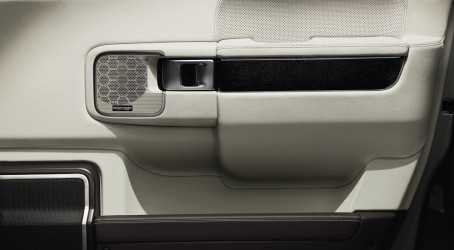Articles
I was never a big Pink Floyd fan. For someone raised in the era of early 1990s grunge and Britpop, 1970s rock provided an important foundation – but not the blueprint. Nonetheless, few music-loving teenagers of the 90s or the preceding two decades would say they hadn’t, at least once, listened to Pink Floyd’s masterpiece The Dark Side of the Moon in a darkened bedroom, vaguely spooked by the cacophony of alarm bells and ticking clocks that precede the song ‘Time’.
One of the standout tracks from that album, ‘Money’, also begins with an array of sound effects: in this case, of cash registers opening and closing and tills ringing. Listening to the song for the first time in years in the back seat of a Range Rover fitted with in-car audio manufacturer Harman Kardon’s surroundsound system is to experience it anew: the cash register clanking seems to come from every direction, conjuring up a symphonic frenzy of capitalism. Your iPod this is not: the effect would only be more astonishing if Roger Waters himself had just snuck up behind you and slipped a crisp, shiny tenner in your back pocket.
The record industry finds revenue harder to come by now, of course, than it did in Waters’ heyday. The advent of the MP3 and digital downloading means music is easier to share and can be readily ripped illegally from the internet so record companies are on the hunt for new ways to make money. Mixing tracks for specific audio technologies such as the Harman Kardon Logic 7 – as heard in the Range Rover Autobiography – could be one way of doing that, suggests record producer Steve Levine, who has recently mixed two of up-and-coming indie band Patch Williams’ tracks specfically for the surroundsound system.
Entertainment is not the only area in which the company is developing new technology, and simulating engine noise for hybrid and electric vehicles is an area of growing importance. The near-silence of EVs is the first thing you notice about them: pedestrian safety dictates that manufacturers will probably eventually be compelled to include some form of engine note technology in the vehicles. Japan is taking the lead in terms of development of EV safety legislation and some OEMs are addressing engine noise, explains Harman Kardon sales director Tony Harberman.
The US lags behind Japan but is probably some way ahead of the UKu2008in terms of safety legisalation affecting hybrid and electric vehicles. The country’s Nationalu2008Highway Traffic Safety Aministration (NHTSA) is already looking at pedestrain safety in terms of electric vehicle noise. In 2009 the organisation measured the increased risk of silent vehicles through accident data.
The NHTSA concluded that in scenarios in which a vehicle is slowing or stopping, backing up, or entering or leaving a parking space, a statistically significant effect was found due to engine type. The electric car was two times more likely to be involved in a pedestrian crash in these situations than an internal combustion engine-powered vehicle.

In partnership with Lotus, Harman has developed a technology demonstrator featuring a “Halosonic” system that simulates engine noise for a Toyota Prius petrol-electric hybrid. The system relies on input on throttle position and load to vary engine noise and play it through speakers mounted front and back. The pitch and volume changes to help identify the speed, direction and distance.
The company is also working on a more advanced version of its surroundsound system, which could be in vehicles by 2012. The system relies on programming to “deconstruct” musical tracks to their source elements, even from mono material, and play them back in optimised form. Harberman says the sound will be more immersive than Logic 7.
“There’s so much more we’re going to be able to do with this,” he says. “It will be a step-change.”